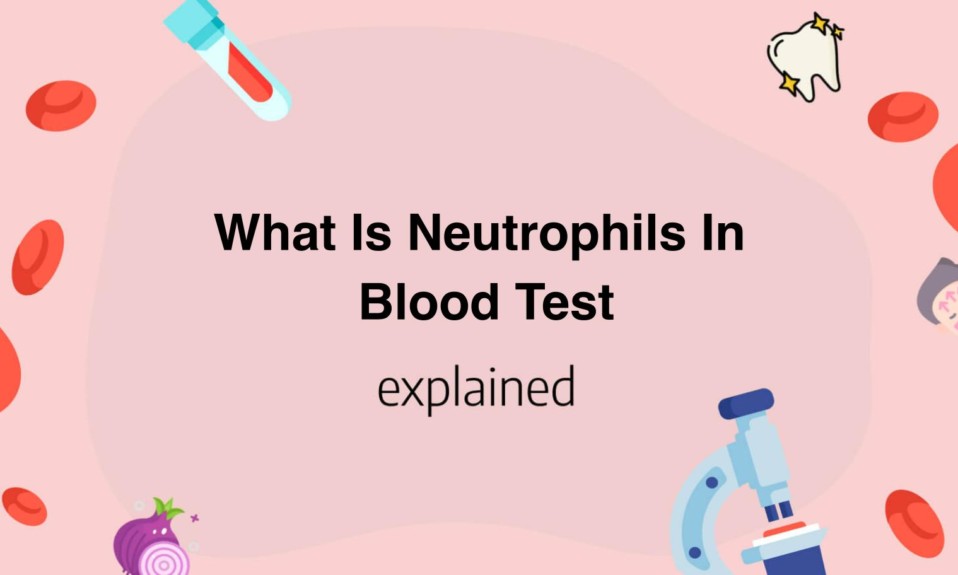A dangerous white blood cell count refers to an abnormal level of these crucial immune system cells in the body, which can indicate an underlying health issue.
White blood cells play a vital role in defending the body against infections and diseases.
When the count exceeds the normal range, it may indicate an infection, inflammation, or other serious conditions like leukemia or an autoimmune disorder.
Understanding the implications of a dangerous white blood cell count is essential for timely diagnosis and effective treatment.
In this article, we will delve into the causes, symptoms, and potential complications associated with an elevated white blood cell count, providing valuable insights for those seeking to safeguard their health.
- A dangerous white blood cell count refers to a high number of white blood cells (more than 10,000 in a microliter of your blood) in the bloodstream, exceeding the normal range.
- This condition, called leukocytosis, can be caused by several factors such as infections, inflammatory diseases, or certain medications.
- A dangerously high white blood cell count can indicate a severe infection or a serious underlying medical condition.
- It may lead to symptoms including fever, fatigue, rapid breathing, and an increased risk of developing complications.
- Treatment of a dangerous white blood cell count usually involves addressing the underlying cause and may include medications or other interventions to restore white blood cell levels to a normal range.
Understanding white blood cells and their significance in health
White blood cells, also known as leukocytes, play a crucial role in our immune system and overall health.
They are a vital component of our immune response, defending the body against foreign invaders such as bacteria, viruses, and parasites.
There are different types of white blood cells, each with its own unique function and significance.
One type of white blood cells is neutrophils, which are the most abundant and first ones to arrive at the site of infection or injury.
They engulf and destroy bacteria, viruses, and other harmful substances.
Additionally, neutrophils release antimicrobial substances that help fight off the invaders.
Lymphocytes, another type of white blood cells, are responsible for acquiring immunity and come in two forms: B cells and T cells.
B cells produce antibodies that target and neutralize specific pathogens.
T cells, on the other hand, identify infected cells and destroy them directly.
These cells are crucial in recognizing and remembering previous infections, enabling a quicker response if re-exposure occurs.
Monocytes are another type of white blood cells that have a scavenging role.
Once they reach the site of infection or inflammation, they can differentiate into macrophages which ingest and destroy pathogens and cellular debris.
Eosinophils and basophils are two less common types of white blood cells that are involved in allergic reactions and parasitic infections, respectively.
Eosinophils release substances that combat parasites, while basophils release histamine, causing inflammation in response to allergens.
Understanding the significance of white blood cells is essential for maintaining good health.
A proper functioning immune system ensures that our body is protected against various diseases.
When white blood cells are unable to function optimally, certain conditions may arise.
For example, a low white blood cell count, known as leukopenia, can lead to a weakened immune system, leaving the body vulnerable to infections.
Conversely, high white blood cell count may indicate an underlying infection or blood disorder.
In conclusion, white blood cells are a fundamental component of the immune system.
Their various types and functions work together to defend the body against pathogens and maintain good health.
Understanding the significance of white blood cells allows us to appreciate the complexity of our immune system and the importance of nurturing it through a healthy lifestyle and proper medical care.
How white blood cell count indicates immune system function
White blood cell count is a crucial indicator of immune system function.
White blood cells, also known as leukocytes, play a vital role in defending the body against infections and diseases.
Monitoring the white blood cell count helps healthcare professionals assess the body’s ability to fight off pathogens and maintain overall health.
A low white blood cell count, known as leukopenia, can indicate a weakened immune system.
This can be caused by various factors such as certain medications, viral infections like HIV or hepatitis, autoimmune disorders, or bone marrow conditions.
Individuals with low white blood cell counts may be more susceptible to infections and may require extra precautions to avoid exposure to pathogens.
For instance, chemotherapy patients often experience leukopenia and must take extra measures to avoid crowded places or sick individuals to minimize the risk of infections.
On the other hand, a high white blood cell count, known as leukocytosis, can be a sign of an inflammatory or infectious condition.
When the body is fighting off an infection, the bone marrow releases more white blood cells into the bloodstream.
Infections like bacterial pneumonia or appendicitis can cause temporary leukocytosis.
However, persistent leukocytosis may indicate a chronic inflammatory condition such as rheumatoid arthritis or inflammatory bowel disease.
In addition to infection and inflammation, white blood cell count can also provide insights into other health conditions.
For example, a high number of eosinophils in the white blood cell count can indicate an allergic condition, such as asthma or hay fever.
Similarly, a high number of lymphocytes may suggest a viral infection, while a high number of neutrophils may indicate a bacterial infection.
Regular monitoring of white blood cell count is essential for identifying potential health issues and evaluating the effectiveness of treatments.
It helps doctors determine the appropriate course of action, such as prescribing antibiotics for infections or adjusting medication for autoimmune disorders.
By understanding the significance of white blood cell count, individuals can be more aware of their immune system function and take necessary steps to maintain their overall health.
To summarize, white blood cell count is a valuable indicator of immune system function.
A low count can signify a weakened immune system, while a high count can indicate infection, inflammation, or other health conditions.
Regular monitoring of white blood cell count allows healthcare professionals to diagnose and treat various ailments promptly.
So, it is crucial to prioritize immune health and take necessary steps to support the immune system.

Common causes of elevated white blood cell count
A high white blood cell count, also known as leukocytosis, can be caused by various factors.
One common cause is infection.
When the body is fighting off an infection, the immune system releases more white blood cells to combat the invading pathogens.
For example, a bacterial infection such as pneumonia or a urinary tract infection can lead to an elevated white blood cell count.
Another factor that can contribute to leukocytosis is inflammation.
Inflammatory conditions like rheumatoid arthritis or inflammatory bowel disease can stimulate the production of white blood cells.
Certain medications can also cause an increase in white blood cells.
For instance, corticosteroids, which are commonly prescribed for autoimmune disorders, can result in leukocytosis.
Additionally, psychotropic drugs such as lithium or clozapine may elevate white blood cell counts.
In some cases, physical stress can be a cause of elevated white blood cells.
Intense exercise, trauma, or surgery can trigger a temporary spike in the production of white blood cells.
This response is part of the body’s defense mechanism to promote healing and prevent infection.
Chronic conditions, such as leukemia or myeloproliferative disorders, can lead to persistently high white blood cell counts.
These conditions involve the overproduction of abnormal white blood cells, which can disrupt the normal balance in the body.
It is important for individuals with these conditions to work closely with their healthcare providers to manage their white blood cell counts.
It is worth noting that while leukocytosis can indicate an underlying health issue, it can also be a normal response to certain situations.
For example, women who are pregnant often experience increased white blood cell counts as a result of hormonal changes and the body’s preparation for childbirth.
In summary, elevated white blood cell counts can be caused by a range of factors, including infection, inflammation, medication, physical stress, and underlying health conditions.
It is essential to consult with a healthcare professional to determine the specific cause and appropriate treatment for leukocytosis.
The role of white blood cell count in diagnosing infections
is crucial in determining the presence of an infection in the body.
White blood cells, also known as leukocytes, are an essential component of the immune system and play a vital role in fighting off infections and diseases.
Elevated or decreased levels of white blood cells can indicate the presence or absence of an infection, providing valuable information to healthcare professionals.
A high white blood cell count is often an indication of an ongoing infection.
When the body detects an infection, it releases chemical signals that stimulate the production of more white blood cells to fight against the invading pathogens.
These additional white blood cells help to eliminate the infectious agents and restore the body to a healthy state.
For example, in cases of bacterial infections such as urinary tract infections or pneumonia, an increase in white blood cell count is usually observed.
On the other hand, a low white blood cell count can also indicate an infection, particularly in cases of viral infections.
Viruses can directly target and destroy white blood cells, leading to a decrease in their numbers.
This compromised immune response can make the body more susceptible to other infections and may prolong the recovery process.
For instance, individuals with HIV/AIDS often experience a decrease in their white blood cell count, making them more vulnerable to various infections.
It is important to note that while white blood cell count is a useful diagnostic tool, it is not the only factor considered when diagnosing infections.
Healthcare professionals also take into account the patient’s symptoms, medical history, and other lab results to make an accurate diagnosis.
Furthermore, certain medications and medical conditions can also affect white blood cell count, so it is essential to interpret the results in conjunction with other relevant factors.
In conclusion, white blood cell count plays a vital role in diagnosing infections.
Whether it is an increase or decrease in white blood cell count, it provides valuable information about the presence or absence of an infection.
By interpreting the white blood cell count alongside other clinical findings, healthcare professionals can make informed decisions regarding treatment strategies and patient care.
Therefore, understanding the significance of white blood cell count is crucial in managing and treating infections effectively.
Read also: Can Low Iron Cause Headaches
What Is A Dangerous White Blood Cell Count
A dangerous white blood cell count, also known as leukocytosis, occurs when there is an abnormally high number of white blood cells present in the body. Usually, if you got more than 10 000 white blood cell in a microliter of your blood, it is consider as high.
White blood cells, or leukocytes, are a crucial component of the immune system and are responsible for fighting off infections and diseases.
However, when the white blood cell count becomes elevated, it may indicate an underlying health issue that requires medical attention.
There are several potential causes of leukocytosis, including:
- Infections: When the body is fighting off an infection, the white blood cell count can increase as a response to the invading pathogens.Common examples include bacterial or viral infections such as pneumonia, urinary tract infections, or appendicitis.
- Inflammatory diseases: Conditions such as rheumatoid arthritis, inflammatory bowel disease, or vasculitis can cause chronic inflammation, leading to an elevated white blood cell count.
- Medications: Certain medications, such as corticosteroids or those used for certain types of cancer treatments, can cause leukocytosis as a side effect.
- Stress or physical exertion: Intense exercise or extreme stress can temporarily increase the white blood cell count, but this is usually not a cause for concern unless it persists over time.
It is important to note that a slightly elevated white blood cell count may not necessarily indicate a dangerous condition.
However, when the count significantly exceeds the normal range, it can be a sign of a serious underlying health problem.
Some potential complications of a dangerously high white blood cell count include:
- Increased risk of infection: While white blood cells are designed to fight off infections, an excessively high count can actually impair their functionality, making the body more susceptible to complications.
- Organ damage: In some cases, an elevated white blood cell count can lead to damage to organs such as the liver, spleen, or kidneys.This can occur due to inflammation or the presence of abnormal cells.
- Blood clotting issues: Certain conditions associated with leukocytosis can disrupt the normal balance of blood clotting factors, potentially leading to issues like deep vein thrombosis or stroke.
If an individual experiences symptoms such as persistent fatigue, unexplained weight loss, frequent infections, or abnormal bleeding, it is essential to consult a healthcare professional.
A complete blood count (CBC) test can help determine the white blood cell count and identify any potential underlying conditions.
Early detection and appropriate treatment are key to preventing complications associated with a dangerous white blood cell count.
You’ll also like: Will My Stomach Be Flat After Fibroid Removal
Potential dangers and complications of high white blood cell count
A high white blood cell count, also known as leukocytosis, can indicate an underlying health issue and potential dangers if left untreated.
It is important to understand the potential complications associated with this condition in order to seek appropriate medical attention and prevent further complications.
One potential danger of a high white blood cell count is the risk of infection.
The increase in white blood cells can be a response to an infection in the body.
These elevated levels of white blood cells indicate that the immune system is actively fighting off an infection.
However, if the infection is not treated in a timely manner, it can lead to further complications and spread to other organs or systems in the body.
Another complication of a high white blood cell count is the potential for an underlying inflammatory condition.
Inflammation can occur in response to various triggers such as autoimmune diseases, chronic infections, or certain medications.
The increased production of white blood cells in this scenario is a result of the body’s attempt to combat the inflammation.
However, if the underlying inflammatory condition is not managed properly, it can lead to chronic inflammation and further complications in the affected organs or tissues.
A high white blood cell count can also be associated with certain types of cancer, such as leukemia.
Leukemia is a type of cancer that affects the bone marrow and leads to the overproduction of abnormal white blood cells.
These cancerous white blood cells do not function properly and can crowd out healthy cells, leading to a compromised immune system.
Early detection and treatment of leukemia can significantly improve outcomes and reduce the risk of complications.
In order to manage a high white blood cell count and prevent potential dangers and complications, it is crucial to address the underlying cause.
This may involve further diagnostic tests, such as imaging or blood tests, to identify the specific condition or infection causing the elevated white blood cell count.
Treatment options may include antibiotics for infections, anti-inflammatory medications for inflammatory conditions, or chemotherapy for certain types of cancer.
Regular monitoring of white blood cell levels and follow-up appointments with a healthcare professional will also be necessary to ensure proper management and prevention of complications.
In conclusion, a high white blood cell count can indicate various underlying health issues and potential dangers if left unaddressed.
It is important to seek medical attention and follow appropriate treatment plans to prevent complications such as infections, chronic inflammation, or certain types of cancer.
Regular monitoring and communication with a healthcare professional are essential for managing this condition effectively and maintaining overall health.
You’ll also like:









